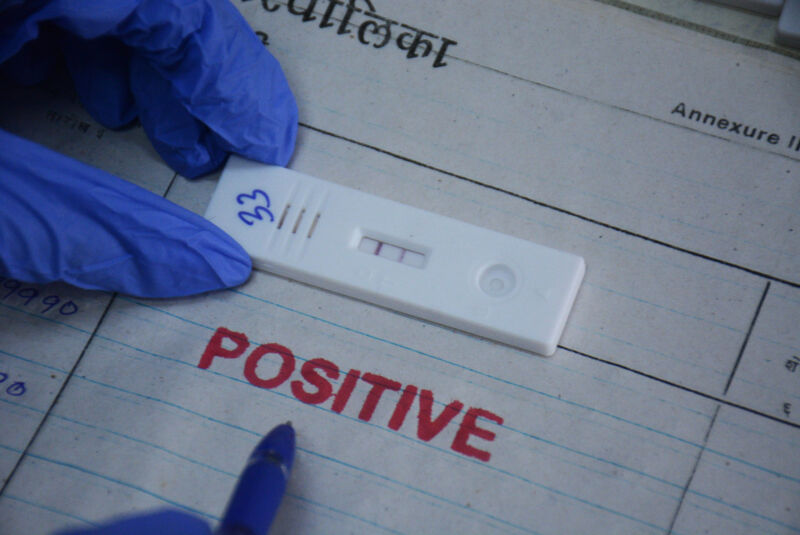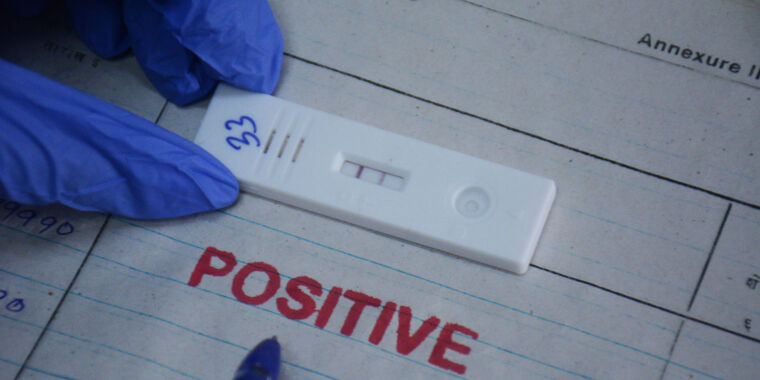
As the omicron coronavirus subvariant BA.5 blazes through the US—accounting for an estimated 54 percent of cases in the country—experts are eyeing another subvariant that threatens to follow hot on its heels.
The subvariant is referred to as BA.2.75 and was first detected in India in late May. Amid a backdrop of BA.2 and BA.5 circulating in India, the newcomer BA.2.75 began quickly gaining ground in June. This week it reached 23 percent of recent virus samples there. Meanwhile, spread beyond India’s borders. It is now present in about 10 other countries, including the US, according to the World Health Organization.
Experts are concerned about the new subvariant, not just because of its rapid rise. It has several mutations in its spike protein—the critical protein that allows the virus to latch onto human cells and the protein that acts as a prime target for immune responses. In particular, BA.2.75 has key mutations that suggest it could be good at evading antibody responses in people who have been vaccinated and/or previously infected with earlier omicron subvariants.
“This subvariant seems to have a few mutations on the receptor binding domain of the spike protein, so obviously, that’s a key part of the virus that attaches itself to the human receptor, so we have to watch that,” Dr. Soumya Swaminathan, the chief scientist for the World Health Organization, said in a video explainer this week.
Swaminathan notes that, for now, the number of samples and sequences is still low, and our understanding of this version of the virus is limited. “It’s still too early to know if this subvariant has properties of additional immune evasion or, indeed, of being more clinically severe. We don’t know that. So, we have to wait and see,” she said, adding that WHO is monitoring the subvariant closely.
US situation
So far, three cases of BA.2.75 have been detected in the US, which were identified in California and Washington state. Helix—a California-based viral surveillance company that works with the Centers for Disease Control and Prevention to track emerging coronavirus variants—confirmed the third US case to Ars in an email Friday. Samples for the three US cases were collected on June 14, June 15, and June 27.
Helix said it’s still too early to predict how BA.2.75 will play out in the US, but the subvariant is worth keeping an eye on—which echoes warnings from outside experts.
In the meantime, BA.5 is sweeping the US. The prevalence of the previous reigning omicron subvariant, BA.2.12.1, has fallen to an estimated 27 percent. BA.4—a subvariant that shares the same spike mutations as BA.5 and has spread alongside BA.5 elsewhere—appears to have stalled out, accounting for just 16.5 percent of US cases.
Amid BA.5’s rise, cases have maintained a high plateau, though many cases detected by rapid tests at home are not being reported. According to tracking by The New York Times, the country is averaging around 108,000 new cases per day. Some experts are anxiously waiting to see if there will be a bump following Independence Day celebrations. Just before the holiday, the positivity rate of reported tests reached a concerning 17.5 percent.
Otherwise, daily hospitalizations are up 15 percent over the last two weeks, to an average of 35,651. Admission to intensive care units is also up 16 percent. Deaths remain plateaued at around 320 per day.








